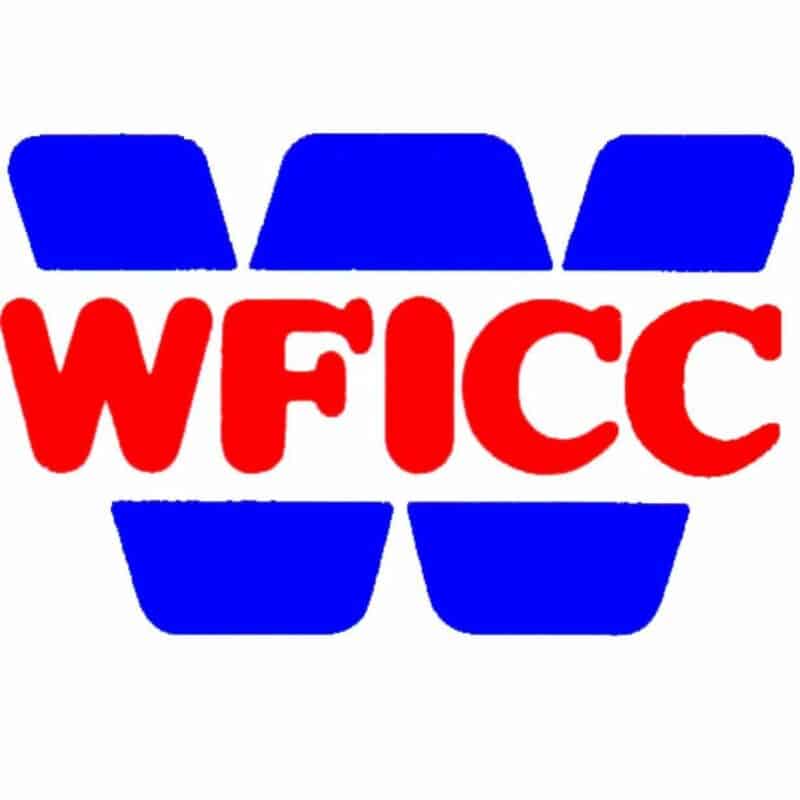本翻譯僅作學術交流用,無商業意圖,請勿轉載,如有疑議問請來信
台灣心臟醫學會於2019年更新心臟衰竭治療指南,重點包括新診斷標準、先進藥物治療,以及非藥物管理策略。此更新亦涵蓋心臟衰竭相關共病的處理,並特別強調心臟毒性的識別與管理,目的在於提升心臟衰竭患者的照護品質和生活質量。
2019年台灣心臟醫學會心臟衰竭診斷和治療指南的重點更新
2019 Focused Update of the Guidelines of the Taiwan Society of Cardiology for the Diagnosis and Treatment of Heart Failure
Chun-Chieh Wang 1, Cho-Kai Wu 2, Ming-Lung Tsai 1, Chii-Ming Lee 2, Wei-Chun Huang 3, Hsin-Hua Chou 4, Jin-Long Huang 5, Nai-Hsin Chi 6, Hsueh-Wei Yen 7, Bing-Hsiean Tzeng 8, Wei-Ting Chang 9, Hung-Yu Chang 10, Chao-Hung Wang 11, Yen-Yu Lu 12, Jui-Peng Tsai 13, Chun-Hung Su 14, Wen-Jin Cherng 1, Wei-Hsian Yin 10, Chia-Ti Tsai 2, Yen-Wen Wu 8, Jiunn-Lee Lin 2 15, Juey-Jen Hwang 2 16
Affiliations expand
PMID: 31249457 PMCID: PMC6533577 DOI: 10.6515/ACS.201905_35(3).20190422A
https://pubmed.ncbi.nlm.nih.gov/31249457/
摘要
心臟衰竭是日益增加的流行病,特別是在台灣,因為人口老化。2016年台灣心臟醫學會 – 心臟功能降低的心臟衰竭(TSOC-HFrEF)登記顯示,醫學指南建議的治療在出院時和隨訪期間均未得到最佳使用。因此,我們進行了這2019年的指南重點更新,針對台灣心臟醫學會的心臟衰竭診斷和治療,強化新的診斷和治療方式的重要性。
2019年的重點更新討論了新的診斷標準、藥物治療、非藥物治療以及心臟衰竭的某些共病。介紹了新的並推薦的醫學治療,包括安慰素受體腎酸酶抑制劑和If通道抑制劑。最新的心臟再同步化治療、植入型心臟除顫器、心臟移植和心室輔助裝置治療的標準在非藥物治療章節中進行了回顧。討論了心臟衰竭中的共病,包括慢性腎病、糖尿病、慢性阻塞性肺病和睡眠呼吸障礙。我們還解釋了氧氣治療和非侵入性通風在心臟衰竭管理中的適當使用。重點更新中加入了一章專門討論化療誘發的心臟毒性,以強調其識別和管理的重要性。最後,討論了TSOC-HFrEF登記的意義和心臟衰竭的急性後護理,強調指南導向的醫學治療和多學科疾病管理計劃的好處。希望通過指南建議,我們的社會可以改進心臟衰竭的管理。
關鍵字:生物標記;心臟再同步化治療;心臟腫瘤學;共病;指南;心臟衰竭;藥物治療;急性後護理;移植;心室輔助裝置。
Abstract
Heart failure is a growing epidemic, especially in Taiwan because of the aging population. The 2016 Taiwan Society of Cardiology – Heart Failure with reduced Ejection Fraction (TSOC-HFrEF) registry showed that the guideline-recommended therapies were prescribed suboptimally both at the time of hospital discharge and during follow-up. We, therefore, conducted this 2019 focused update of the guidelines of the Taiwan Society of Cardiology for the diagnosis and treatment of heart failure to reinforce the importance of new diagnostic and therapeutic modalities of heart failure. The 2019 focused update discusses new diagnostic criteria, pharmacotherapy, non-pharmacological management, and certain co-morbidities of heart failure. Angiotensin receptor neprilysin inhibitor and If channel inhibitor is introduced as new and recommended medical therapies. Latest criteria of cardiac resynchronization therapy, implantable cardioverter-defibrillator, heart transplantation, and ventricular assist device therapy are reviewed in the non-pharmacological management chapter. Co-morbidities in heart failure are discussed including chronic kidney disease, diabetes, chronic obstructive pulmonary disease, and sleep-disordered breathing. We also explain the adequate use of oxygen therapy and non-invasive ventilation in heart failure management. A particular chapter for chemotherapy-induced cardiac toxicity is incorporated in the focused update to emphasize the importance of its recognition and management. Lastly, implications from the TSOC-HFrEF registry and post-acute care of heart failure are discussed to highlight the importance of guideline-directed medical therapy and the benefits of multidisciplinary disease management programs. With guideline recommendations, we hope that the management of heart failure can be improved in our society.
Keywords: Biomarkers; Cardiac resynchronization therapy; Cardio-oncology; Co-morbidities; Guidelines; Heart failure; Pharmacotherapy; Post-acute care; Transplantation; Ventricular assist device.
圖表
圖1圖1 (A) 保存射血分數的心臟衰竭診斷。 (B) 二尖瓣功能障礙的分級。BNP, B型利尿激素前肽;HF, 心臟衰竭;HFpEF, 保存射血分數的心臟衰竭;LVEF, 左心室射血分數;NT-proBNP, N端B型利尿激素前肽。
圖2圖2 利用B型利尿激素前肽(BNP)或N端B型利尿激素前肽(NT-proBNP)輔助心臟衰竭差異診斷的算法。HF, 心臟衰竭;MRI, 磁共振成像。
圖3圖3 用於心臟衰竭差異診斷的關鍵生物標記和必要的實驗室參數。ALT, 丙氨酸轉氨酶;AST, 天門冬氨酸轉氨酶;BNP, B型利尿激素前肽;BUN, 血尿素氮;Hb, 血紅蛋白;HCT, 血紅細胞比容;HF, 心臟衰竭;NGAL, 中性粒細胞明膠酶相關的脂肪酸結合蛋白;NT-proBNP, N端B型利尿激素前肽;UACR, 尿白蛋白對肌酸酐比率。
圖4圖4 心臟再同步化治療的指征。AF, 心房顫動;CLBBB, 完全左束支傳導阻滯;CRT, 心臟再同步化治療;Fc, 功能分級;HFrEF, 射血分數降低的心臟衰竭;LBBB, 左束支傳導阻滯;LVEF, 左心室射血分數;QRSd, QRS持續時間;RVP, 右心室起搏。
圖5圖5 ICD一級指征。CABG, 冠狀動脈搭橋手術;CAD, 冠狀動脈疾病;CLBBB, 完全左束支傳導阻滯;CRT, 心臟再同步化治療;CRT-D, 心臟再同步化治療除顫器;EPS, 電生理研究;ICD, 植入型心臟除顫器;LVEF, 左心室射血分數;MI, 心肌梗死;NIDCM, 非缺血性擴張型心肌病;NSVT, 非持續性心室性心動過速;NYHA, 紐約心臟協會;PTCA, 經皮冠狀動脈成形術;tx, 治療;VF, 心室顫動;VT, 心室性心動過速。
圖6圖6 D期心臟衰竭的算法更改。DT, 目的治療;IABP, 主動脈內球囊泵;IV, 靜脈內;LVAD, 左心室輔助裝置;LVEF, 左心室射血分數;VO2, 氧氣攝取。
圖7圖7 減少化療引起的心毒性的策略。ACEI, 轉化酶抑制劑;ARB, 肾素-安琪酮受体拮抗劑。
圖8圖8 根據指南推薦的不同類型和劑量藥物的登記病人的Kaplan-Meier生存曲線。改編自“射血分數降低的心臟衰竭中指南與臨床實踐之間的差距:來自TSOC-HFrEF登記的結果”,由Chang HY, Wang CC, Wei J等著,J Chin Med Assoc 2017;80: 750-7。經許可改編。
圖9圖9 從急性、次急性到慢性階段的時期。
圖10圖10 出院前的程序。Cath, 心臟導管檢查;COPD, 慢性阻塞性肺疾病;ED, 急診科;EF, 射血分數;HF, 心臟衰竭;ICU, 重症監護病房;Lab, 實驗室檢測;PT, 物理治療師;rehab, 復健。
圖11圖11 出院後的程序。Echo, 心臟超聲檢查;HF, 心臟衰竭;rehab, 復健。



 English
English Bahasa Melayu
Bahasa Melayu Bahasa Indonesia
Bahasa Indonesia Tiếng Việt
Tiếng Việt ไทย
ไทย